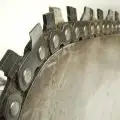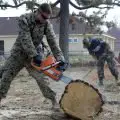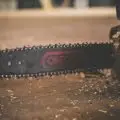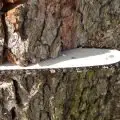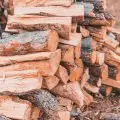Palm trees are beautiful, but they may be a nuisance at times. You may need to cut them down for a variety of reasons. They may become rotten or infested, get too enormous, necessitate extensive upkeep, or present problems during storms. Let’s discuss how to cut a palm tree down with a chainsaw, all the necessary planning, and the important things to consider throughout the process.
Table of Contents

How to Cut a Palm Tree Down
Planning Palm Tree Removal
Before beginning the operation, it is critical to utilize the proper method to ensure that the palm tree falls securely and in the desired direction. Otherwise, it may fall in the opposite direction and cause harm to property. Worse, it may fall in a direction that will crush you and anyone assisting you.
Here are two types of cuts that can be used to direct the fall:
Use a top cut:
Make an undercut at the base of the tree, followed by an angle cut from the top of the tree. This should form a wedge shape, which will aid in guiding the tree in the desired direction.
Use a back cut:
Make an undercut at the base of the tree, followed by an angle cut from the back of the trunk. This will help to weaken the tall tree in the desired direction of fall.
Prepare Your Chainsaw
Make sure your gas pro chainsaw is sharp and oiled with chainsaw bar oil. You should also look through the safety features (bruise guard and scabbard). This will serve as an additional safeguard against chainsaw kickbacks and other injury concerns during use.
Visit our How to Sharpen a Chainsaw Chain and How to Oil a Chainsaw Chain & Bar for information on these, along with our Chainsaw Maintenance Checklist guide to ensure you’re following the necessary maintenance steps.
Wear Protective Gear
Palm tree cutting can be dangerous, so never underestimate the need for the necessary safety equipment. Put on a facemask and earplugs. It is risky to use a chainsaw incorrectly.
You should safeguard your hearing by wearing noise-canceling ear muffs and a decent hard hat with a flip-up face mask to keep flying hardwood shards out of your face and eyes. You should also dress in strong boots, gloves, long sleeves, and slacks.
If you must climb the tree, wear a harness. It will be required to climb the tree in order to trim it and lessen its weight. For a tall palm tree that is 12 feet or taller, a hydraulic lift or harness will be required. Attach your harness to a tree or something stable, such as a nearby building.
The harness can be purchased on the internet or at home improvement stores. It’s a good idea to hire someone if you’re not comfortable doing it yourself.
Visit our Chainsaw Pants vs Chaps for a chainsaw leg safety gear guide!
Evaluate the Tree
Determine the direction in which your tree will fall. Take a step back and glance up its trunk to determine its lean. It’s very likely that it will fall in that direction. Check that your tree is not too close to any electrical wires.
You should also ensure that it will not fall on vehicles or other items. Check local tree removal restrictions and contact a professional or a reputable tree removal service if the tree is close to power lines or other structures.
If you can’t make the tree fall the way it’s leaning, you’ll need to cut a deeper notch in the direction you want it to fall. Cut about one-third of the way into the tree’s trunk. If your tree has holes or cracks, it may fall in the direction of those areas that are injured. Make sure you’re aware of the danger zones and that you’re working around them.
Clear the Area
Before you cut your tree, make sure the space is clear. Before you begin working on your tree, make sure there is no one in the area. A queen palm tree is extremely heavy, and even its fronds, when they fall, can inflict damage.
Pets and children should be kept at a safe distance until your tree has been removed. You should be aware of your surroundings. Make an escape plan in case the tree starts splintering, the tree falling towards you, or cracking.
Remove the Fronds
A ladder will allow you to remove the fronds from a shorter tree. Place your ladder next to the branch you’re chopping so it doesn’t fall on you. If this isn’t possible, hydraulic lifts or nearby structures can assist you in getting above the fronds.
Stand above or next to your fronds when pruning them. Don’t put yourself beneath them. Ask someone to assist you in keeping an eye on the tree and keeping an eye out for it to splinter or fall in the opposite direction. The person holding the ladder for you might be able to help you with this.
You can cut your fronds with a pruning saw. Cut through your fronds one by one with your saw. Cut each of them very near the tree’s trunk. You can also use your chainsaw, but because fronds are often tough, your blades will wear out rapidly.
Allow the branches you’ve pruned to fall. While you’re working, make sure no one is beneath your tree. If you are unable to cut the fronds, you can cut down the entire tree.
However, keep in mind that the fronds will add weight to your tree and alter its trajectory. The wind will also have an impact on the trajectory, especially if your tree still has fronds.
How to Cut Down Palm Tree
How to Remove a Palm Tree
Total Time: 30 minutes
Position the Chainsaw
To begin, set up the chainsaw to cut parallel to the ground and at an angle to the palm tree’s trunk.
Place the Wedges
Place wedges between the tree and the saw blade to assist and guide the tree in the desired direction.
Create a ‘V’ Shape Notch
Make a ‘V’ shape notch near the top of where you want to cut. The depth of the ‘V’ shape should be 23; do not press too hard on one side as this can produce uneven breakage.
Cut Down at the Bottom
Begin cutting at the base of the tree. Making shallow cuts around 2 inches deep. If you cut too deeply, you risk ruining the chainsaw blade.
Cut the Trunk
Begin cutting at the trunk of the tree. Making shallow cuts around 2 inches deep. If you cut too deeply, you risk ruining the chainsaw blade.
Make the Final Cut
After you’ve gone around the entire trunk, make a final incision at the tree’s top, making sure it goes all the way through. As a result, the tree will fall safely.
You can follow the above process for how to cut down a queen palm tree, how to cut down a tall palm tree, and how to cut down a mexican fan palm tree!
Wondering how to cut down a dead palm tree? Visit our Cutting Down Dead Trees article! If the challenge at hand is too difficult, contact a tree removal company, especially if the palm tree’s root system is complex.
How to Remove a Palm Tree Stump
Getting a grinder is one of the best techniques to eliminate your stump. Rent one of the electric stump grinders to remove the remaining palm trees. You’ll have to work your way down through your stump, removing it one piece at a time. This will necessitate some work. You’ll need to be patient and steadily whittle down your stump.
You’ll also need to dig around your stump to uncover the piece that’s remaining. To make things easier, apply a stump killer comprised of potassium nitrate.
Interested in additional tree-cutting information? Visit our guides:
FAQs (Frequently Asked Questions)
Can I cut down my palm tree?
If you know what you’re doing, you can securely remove palm trees. Hiring a tree service to remove a palm tree is a wise option because of the possible damage it could do to nearby structures. You can either dig up the palm tree roots and replant them, or you can cut them down carefully.
Do palm trees grow back if cut down?
If you intend to chop your Palm tree at the trunk level, it will NOT regrow. Palm tree growth can only occur at this base level known as the growing tip, or sometimes even the crown shaft, which sits at the base of the trunk, and removing this part of the trunk completely kills the plant.
What happens if you cut down a palm tree?
Cutting the developing point (crown shaft) of a single-trunked palm species kills the tree completely. The trunk cannot regenerate a new growth tip to replace the missing crown shaft, and the palm weakens and finally rots without a leaf to photosynthesize light.
Why are palm trees so hard to cut down?
Because of their structure, palms are extremely tough on saw blades. They develop as massive bundles of grasslike blades, each with its own respiratory and circulatory system like monocots. Because of this, the body is wet and fibrous, making it difficult to break into small enough pieces for disposal.

